| Solar eclipse of June 1, 2087 | |
|---|---|
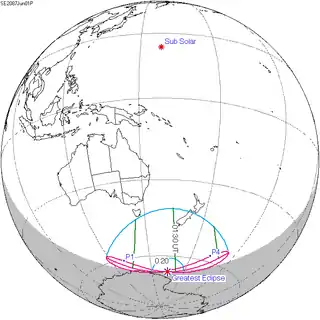 Map | |
| Type of eclipse | |
| Nature | Partial |
| Gamma | −1.4186 |
| Magnitude | 0.2146 |
| Maximum eclipse | |
| Coordinates | 67°48′S 165°24′E / 67.8°S 165.4°E |
| Times (UTC) | |
| Greatest eclipse | 1:27:14 |
| References | |
| Saros | 158 (2 of 70) |
| Catalog # (SE5000) | 9703 |
A partial solar eclipse will occur on June 1, 2087. A solar eclipse occurs when the Moon passes between Earth and the Sun, thereby totally or partly obscuring the image of the Sun for a viewer on Earth. A partial solar eclipse occurs in the polar regions of the Earth when the center of the Moon's shadow misses the Earth.
Related eclipses
Solar eclipses 2083–2087
This eclipse is a member of a semester series. An eclipse in a semester series of solar eclipses repeats approximately every 177 days and 4 hours (a semester) at alternating nodes of the Moon's orbit.[1]
| Solar eclipse series sets from 2083–2087 | ||||
|---|---|---|---|---|
| Descending node | Ascending node | |||
| 118 | July 15, 2083 Partial |
123 | January 7, 2084 Partial | |
| 128 | July 3, 2084 Annular |
133 | December 27, 2084 Total | |
| 138 | June 22, 2085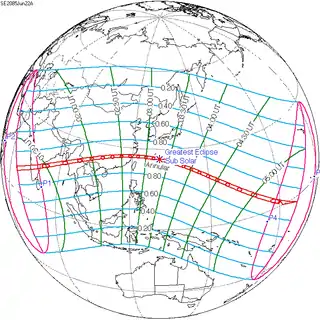 Annular |
143 | December 16, 2085 Annular | |
| 148 | June 11, 2086 Total |
153 | December 6, 2086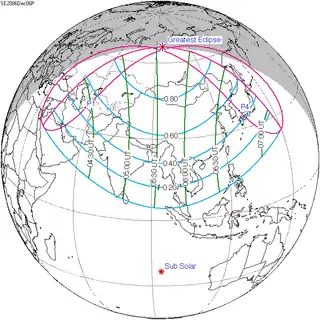 Partial | |
| 158 | June 1, 2087 Partial | |||
Metonic series
The metonic series repeats eclipses every 19 years (6939.69 days), lasting about 5 cycles. Eclipses occur in nearly the same calendar date. In addition, the octon subseries repeats 1/5 of that or every 3.8 years (1387.94 days). All eclipses in this table occur at the Moon's descending node.
| 21 eclipse events between June 1, 2011 and June 1, 2087 | ||||
|---|---|---|---|---|
| May 31 – June 1 | March 19–20 | January 5–6 | October 24–25 | August 12–13 |
| 118 | 120 | 122 | 124 | 126 |
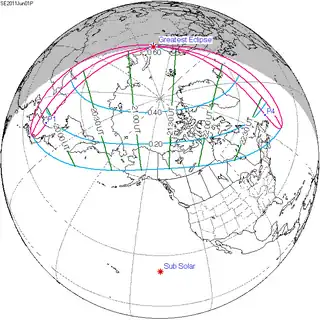 June 1, 2011 |
 March 20, 2015 |
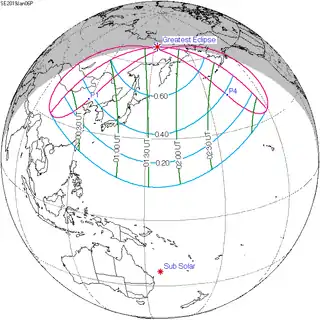 January 6, 2019 |
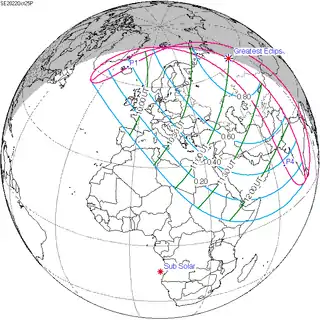 October 25, 2022 |
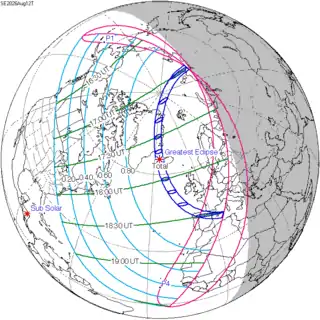 August 12, 2026 |
| 128 | 130 | 132 | 134 | 136 |
 June 1, 2030 |
 March 20, 2034 |
 January 5, 2038 |
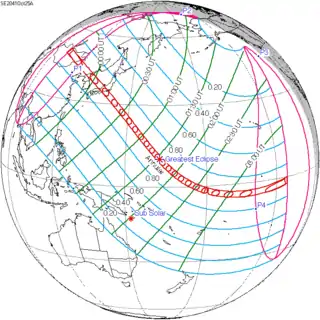 October 25, 2041 |
 August 12, 2045 |
| 138 | 140 | 142 | 144 | 146 |
 May 31, 2049 |
 March 20, 2053 |
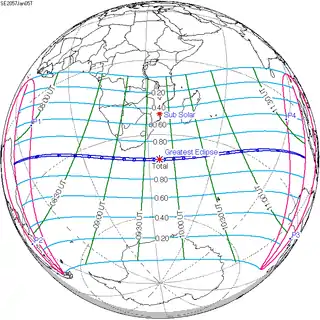 January 5, 2057 |
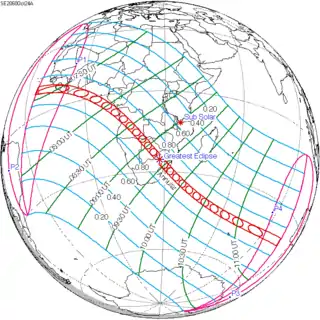 October 24, 2060 |
 August 12, 2064 |
| 148 | 150 | 152 | 154 | 156 |
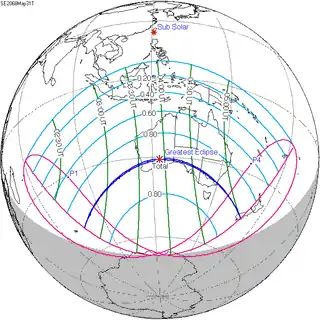 May 31, 2068 |
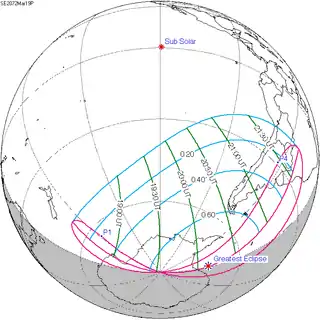 March 19, 2072 |
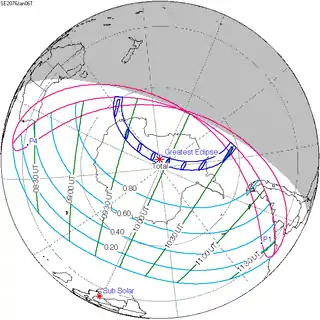 January 6, 2076 |
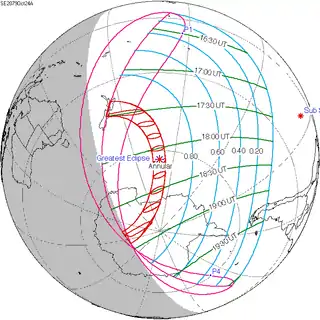 October 24, 2079 |
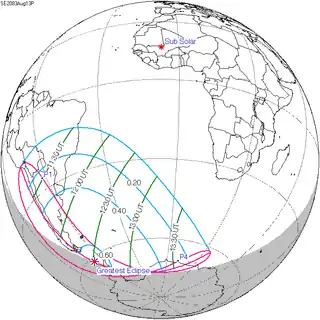 August 13, 2083 |
| 158 | 160 | 162 | 164 | 166 |
 June 1, 2087 |
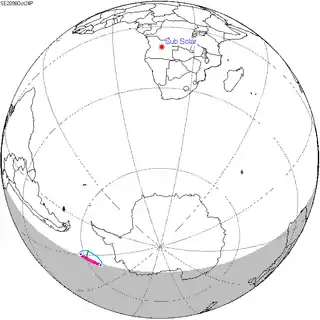 October 24, 2098 |
|||
References
- ↑ van Gent, R.H. "Solar- and Lunar-Eclipse Predictions from Antiquity to the Present". A Catalogue of Eclipse Cycles. Utrecht University. Retrieved 6 October 2018.
External links
- Earth visibility chart and eclipse statistics Eclipse Predictions by Fred Espenak, NASA/GSFC
.jpg.webp)

